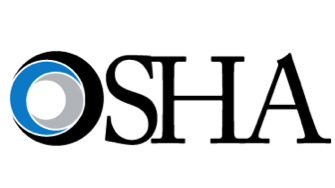"This deadly pandemic has taken a staggering toll on U.S. workers and their families. We have a moral obligation to do what we can to protect workers, especially for the many who have no other protection," said Principal Deputy Assistant Secretary of Labor for Occupational Safety and Health Jim Frederick. "This program seeks to substantially reduce or eliminate coronavirus exposure for workers in companies where risks are high, and to protect workers who raise concerns that their employer is failing to protect them from the risks of exposure."
NEP inspections will enhance the agency’s previous coronavirus enforcement efforts, and will include some follow-up inspections of worksites inspected in 2020. The program’s focused strategy ensures abatement and includes monitoring the effectiveness of OSHA’s enforcement and guidance efforts. The program will remain in effect for up to one year from its issuance date, though OSHA has the flexibility to amend or cancel the program as the pandemic subsides.
"With more people being vaccinated and the number of infections trending down, we know there is light at the end of the tunnel. But until we are past this pandemic workers deserve a Labor Department that is looking out for their health," added Frederick.
OSHA state plans have adopted varying requirements to protect employees from coronavirus, and OSHA knows many of them have implemented enforcement programs similar to this NEP. While it does not require it, OSHA strongly encourages the rest to adopt this NEP. State plans must notify federal OSHA of their intention to adopt the NEP within 60 days after its issuance.
In a related action, OSHA has also updated its Interim Enforcement Response Plan to prioritize the use of on-site workplace inspections where practical, or a combination of on-site and remote methods. OSHA will only use remote-only inspections if the agency determines that on-site inspections cannot be performed safely. On March 18, 2021, OSHA will rescind the May 26, 2020, memorandum on this topic and this new guidance will go into and remain in effect until further notice.
OSHA will ensure that its Compliance Safety and Health Officers have every protection necessary for onsite inspections. When conducting on-site inspections, OSHA will evaluate all risk and utilize appropriate protective measures, including appropriate respiratory protection and other necessary personal protective equipment.
Under the Occupational Safety and Health Act of 1970, employers are responsible for providing safe and healthful workplaces for their employees. OSHA's role is to help ensure these conditions for America's working men and women by setting and enforcing standards, and providing training, education and assistance. under the Occupational Safety and Health Act.













